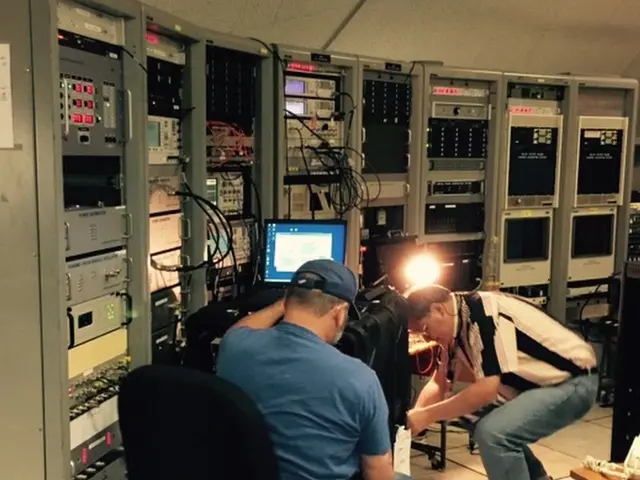Monsoon concerns escalate in Ludhiana as the recent storm unveils decaying power infrastructure by PSPCL.
Ludhiana Power Grid Struggles Amid Heavy Infrastructure Investment
Ludhiana, despite a substantial ₹486 crore investment in power infrastructure upgrades, was plunged into a prolonged blackout following a recent storm, exposing glaring inefficiencies in the Punjab State Power Corporation Limited (PSPCL) grid.
Despite the investment, the power supply remains vulnerable to harsh weather conditions, as the recent storm unveiled glaring lapses in the city's modernized infrastructure. The incident intensified public frustration, as promises of an uninterrupted electricity supply remained unmet, particularly during the monsoon season.
The power outages lasting up to 24 hours left residents sweltering in the brutal heat. The incident has sparked widespread questioning of PSPCL's effectiveness, as substantial investments of ₹221 crore and more were poured into upgrading the city's electricity network.
The city, which power minister Harbhajan Singh ETO had lauded for its transformative network overhaul, continues to face frequent power cuts, persistent voltage fluctuations, and poor load management. The recent storm revealed the vulnerability of modern infrastructure, as the power supply system crumbled under pressure.
Around 700 electric poles were uprooted, 163 transformers were destroyed, and over 6 km of ACSR wires snapped in the storm. While the situation has reportedly improved with the replacement of most damaged equipment, the event highlights the insufficient preparedness for inclement weather.
A senior PSPCL official, on the condition of anonymity, indicated that the focus of investment in Ludhiana's power infrastructure has been mainly on transformer upgrades, transmission line improvements, and increasing grid capacity. However, the official pointed out that the recent outages stemmed from weak pole structures that failed during the storm.
The official further explained that the pole structures tend to be set in loosely dug soil without the muffing technique, leaving them prone to collapsing amid rain and storm. This contributes to power disruptions lasting for hours.
It is also worth noting the 94% spike in unauthorized electricity loads, which increased from 11,060 cases in 2024 to 21,496 this year. This surge in unauthorized load further strains the power grid and may exacerbate power outages during high demand periods.
With the monsoon season fast approaching, it remains unclear whether concrete measures will be taken to mitigate recurring power failures and improve the city's resilience in the face of harsh weather conditions.
- Despite substantial investments in upgrading the city's electricity network, the vulnerability of modern infrastructure to harsh weather conditions, such as the recent storm, is apparent in Ludhiana.
- The focus of investment in Ludhiana's power infrastructure has been on transformer upgrades, transmission line improvements, and increasing grid capacity, but weak pole structures have been a significant factor in the recent power outages.
- The insufficient preparedness for inclement weather, evident in the large number of damaged electric poles, transformers, and ACSR wires during the storm, could be an area of improvement in Ludhiana's environmental-science and industry.
- As the monsoon season approaches, addressing the 94% spike in unauthorized electricity loads and mitigating their impact on the power grid through banking-and-insurance and finance mechanisms may be crucial in minimizing power outages during high demand periods.






